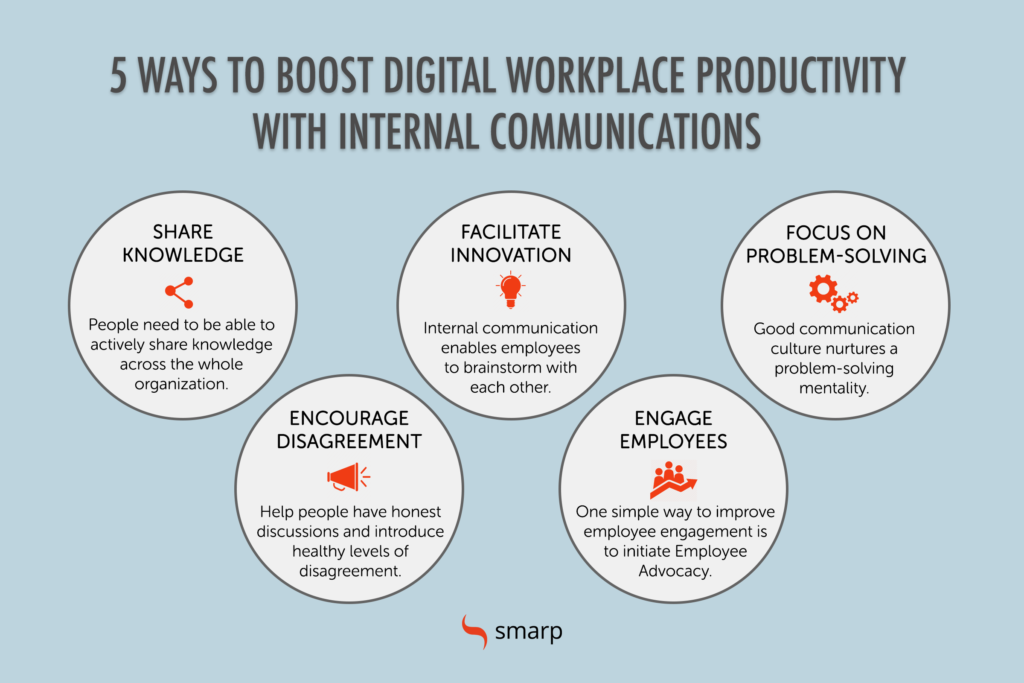
Proficient internal communication is achieved when all employees, no matter the level of seniority, are able to pass on information with one another. Arguably, the relationship between management and grassroots staff is the most influential component within workplace communications.
85% of employees are not engaged in the workplace
Modern companies are searching for new ways to ensure they are remaining relevant when providing communicational support to their employees. A typical obstacle, particularly within larger organizations, has seen management teams become allusive figureheads. This distancing has impacted the coordination and bond between managers and staff, thus affecting levels of collaboration throughout the office.
According to Gallup’s 2017 research State of the Global Workplace, only a staggering 15% of employees are said to be fully engaged in their place of work.
4 Facts every manager should know about employee engagement:

You have questions which need answers still, right? We have compiled a list of our top tips which aim to uncover ways of enhancing communication between management and employees for your organization:
Investing in a social platform such as an intranet can help better connect employees of any job role, department and level of seniority. Offering your workforce an intranet gives them a central environment to bring ideas forward, encourage those who are less confident in face-to-face scenarios to speak more and provide grassroots staff a building block to increase engagement with the management team.
Why are we not already doing this? There is a common reluctancy within companies to invest beyond the technology they currently have to hand. The boss may think your company has all the necessary social tools already to hand, but this reluctancy to adopt new technology prevents employees from connecting further. Not only are you coming up short internally, your competitors are gaining an edge over you.
Improving accessibility between grassroots staff and managers is now possible with the implementation of new technology. Chris Dede, Harvard Graduate School of Education, published an article which showcased how increasing colleague interaction through sophisticated collaboration tools is made possible.
What better way to get yourself heard than writing your very own blog? Not only are writing blogs a good method of communicating with management members, they’re also a great way for managers to react and respond to employees who are posting themselves. Conversing with your employees by writing, sharing or simply commenting on a blog post is a simple but effective way of connecting over projects, work related ideas and office trends.
You might be thinking, ‘okay but I’m not a confident writer?’ Internal blogging within the workplace isn’t required to be of a high standard, it is more an opportunity to engage with your colleagues.
Efficient writing consists of styling your content conversationally, as if what you are posting is meant for a friend. They should be kept informal whilst addressed in the first and second person so your colleagues feel invited to interact with you. Avoid identifying writing a blog as a one-time thing just to tick off. Instead, you should think about how regularly you wish to post, whether this is weekly or monthly. It’s useful to map out your activity level throughout the year so you can structure your blogs more periodically.
Additionally, take considerations when piecing your writing together, e.g. include an attention-grabbing announcement or give your audience something to look forward to reading within your next post so they are more likely to engage with your blogs in the future. Most importantly, picture your own experiences of viewing blogs and ask yourself, what are the values you look for in an engaging read? In the viewpoint of your colleagues, is the content provided useful to colleagues, original and compelling?
Here’s a breakdown of how blogging can benefit you:

The ‘office language’ we use can generate a social barrier in the workplace, often causing decreased levels of communication between staff. This barrier is commonly witnessed amongst management and employees due to their title differences. Dropping the level of formality may allow employees to feel more comfortable, invite them to engage in chat more frequently and, in turn, get their contribution to the business through faster.
So how can we put this into practice? Rolling out such a change can take time to adjust, but with the implementation of management increasingly using informal language, be it in appropriate situations, your employees are likely to follow suit.
Language change doesn’t mean completely stripping formal dialogue, rather just using informal language in different modes of talk across the company. Emails, project discussions, desk and kitchen chat are all types of communicational scenarios where more casual use of language can be exercised between your personnel.
A great way for employees to form relationships is through hosting company socials and other such out of office events. For much of the time, the nine-till-five hours can feel quite overwhelming for staff to integrate with one another. Moving away from the office atmosphere once in a while can go a long way for those who are less outspoken.
A common misconception of an employee’s relationship with their managers is that it must remain professional at all times. This view can lead employees to shy away from interacting with hierarchical colleagues. Typically, employees can fear that any conversation steering away from work related topics is seen as inappropriate or they may be conscious of never having conversed with a member of management before. This sense of etiquette is exaggerated by individuals and shouldn’t get in the way of members of staff communicating with one another. In fact, the repercussions for muting talk can be detrimental to overall work fulfilment due to holding back contributions and ideas.

Senior members are called upon to give organizations a sense of leadership, to be decision makers, to drive cultural values within their company, while being of assistance to the workforce.
The contribution of members of management isn’t possible without grassroots staff ensuring their own job responsibilities are met to succeed your company’s goals. Ultimately, the role fulfilment between management and employees run parallel with one another, thus highlighting the importance for the bridging of their relationships in order to achieve maximum cooperation throughout your business.
A survey conducted by OfficeVibe highlights The Global State of Employee Engagement. They uncovered the key metrics towards boosting employee engagement and we have narrowed down which ones are relevant to internal communication:

In the words of Dave Mattson from Sandler Training ‘Communication is key in any relationship. Whether that relationship is with your spouse, your peers, your children, or your employees, it always comes back to a transfer of information, honesty, and respect. What separates good teams from great ones isn’t talent or skill, but the ability to work together towards a common goal.’
Members of management must be the driving force behind internal communication with grassroots staff. Their role is empowered within your organization, enabling them to motivate employees, encourage open dialogue and help build a working environment which brings collaboration to the fore.